In this article:
An ingrown toenail, or onychocryptosis, is a common but painful problem wherein the corners or edges of the nail plate penetrate into the surrounding skin or flesh called the nail fold. (1)
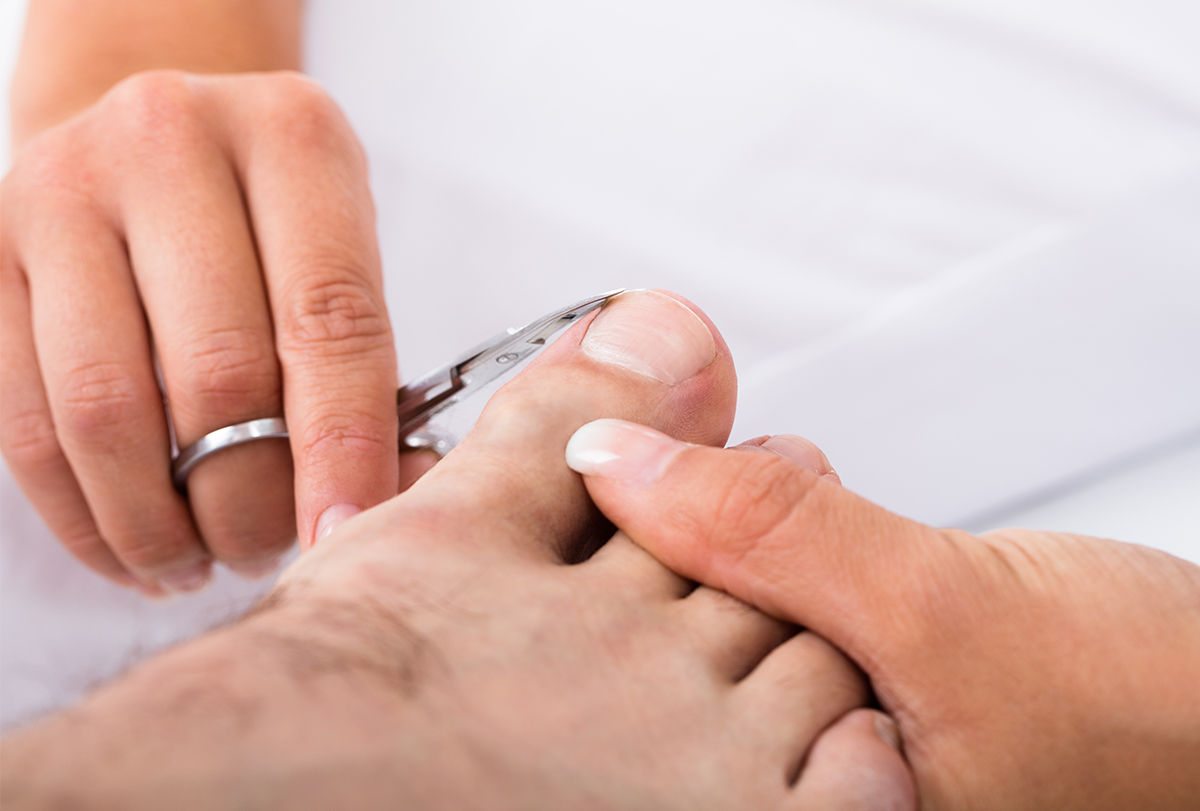
The nail fold normally overlaps the base and sides of the nail plate to a small degree. Onychocryptosis occurs when the nail fold bulges inward toward the nail bed such that the nail plate cuts into it or when the toenail grows irregularly and digs into the fold.
Weight-bearing activities for long durations and wearing tight footwear with a narrow toe box exert undue pressure on the toes, which can curve the toenails and make them grow downward rather than straight up.
This problem usually affects people with excess skin around the nail. When the toes are squeezed constantly, this extra skin bulges over the nail plate. This ingrowth causes a lot of inflammation and discomfort, which can make walking and even standing very difficult.
This article discusses the causes of an ingrown toenail, the treatment modalities available to manage the condition, and the situations that warrant medical intervention to avoid complications.
Causes of an Ingrown Toenail
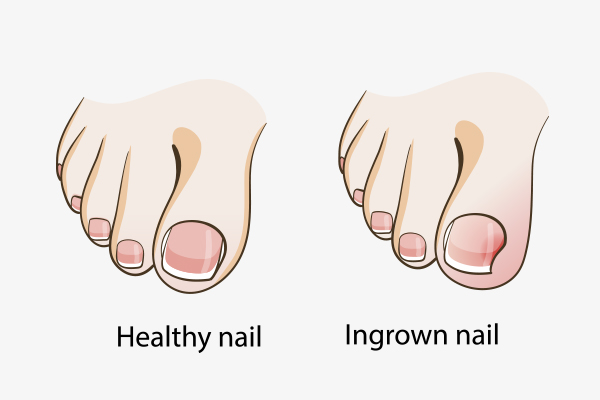
The major causes of an ingrown toenail include the following: (2)
- Wearing ill-fitting shoes that are small in size or have a narrow front, putting excessive pressure on the toes
- Wearing tight socks and stockings that squeeze the toes
- Trimming or cutting the toenails in a curved angle or too short such that the nail bed becomes exposed
- Injuring the toe or nail plate by stubbing it against a hard surface or dropping something heavy on it or during a vigorous exercise, making the nail grow abnormally into the flesh
- Breaking the toenail, allowing it to grow at odd angles
- Medical conditions such as onychauxis, which is characterized by unusually curved or deformed toenails
- Fungal toenail infections
- Improper posture
Signs and Symptoms of an Ingrown Toenail
An ingrown toenail is usually accompanied by the following signs and symptoms:
- The persistent pain worsens when the affected toe is moved or put under any kind of pressure.
- The severity of the pain depends on the extent of the ingrowth.
- The skin around the ingrown toenail becomes red, tender, and swollen.
- The skin adjoining the ingrown nail may harden eventually.
- The toenail may curve into the toe.
- There is fluid or pus-like discharge at the affected site, which is typically a sign of infection.
Medical Treatment for an Ingrown Toenail
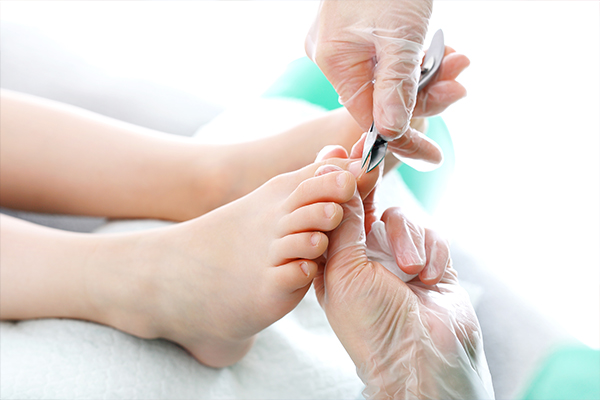
Ingrown toenails don’t always require medical treatment, but it becomes a necessity if the problem becomes recurrent, unbearably painful, progressively worse, or infected.
There are many different ways to manage an ingrown toenail, (3) such as using toe separators and splints or removing ingrown nails through electrocautery, radiofrequency ablation, and carbon dioxide laser ablation, but surgery is the only one that offers a permanent solution.
The doctor will examine your ingrowth and then recommend the most suitable treatment. If an underlying condition is causing or aggravating the ingrowth, it needs to be treated first. This includes onychomycosis, which is a common fungal infection affecting the nail, and hyperhidrosis, which is an abnormal tendency to sweat a lot despite any heat or physical activity.
Nonsurgical interventions usually provide a temporary respite and are recommended to those who cannot undergo surgery for some reason:
- A slant back procedure involves trimming the painful nail edge as far away from the nail fold as possible. This can only be performed by a podiatrist in a clinical setting and has to be redone periodically for any long-lasting relief.
- A gutter-shaped splint is worn to keep the curved edge of the ingrown toenail as far away from the nail fold. This plastic brace allows the ingrown toenail to grow away from the surrounding skin.
- Bandaging the lateral nail fold along the painful side with a Band-Aid or medical tape to separate the nail and surrounding skin relieves the pressure and drains out the pus or discharge.
The main reasons for performing toenail surgery are:
- Surgery is needed to cut out the curved edge of the toenail so that it does not dig into the surrounding tissue as it grows forward.
- A toenail infection must be treated immediately before it spreads to the underlying bone. To that end, your physician may prescribe oral antibiotics and even recommend partial or complete nail removal surgery depending on the extent and severity of the infection. This may involve surgically excising a portion of the nail, a portion of the underlying nail bed, some of the surrounding soft tissues, and even a part of the matrix.
There are basically two kinds of surgeries for ingrown toenails:
- Partial nail avulsion, wherein the doctor uses scissors to carefully remove the ingrown part of the toenail without touching the nail bed or nail matrix. Since the nail matrix remains intact, the nail plate can regrow after this procedure, but the healing process may take between 6 weeks and 4 months.
- Total nail avulsion (TNA), wherein the entire toenail is removed down to its very root or nail matrix. If this procedure is performed with a chemical agent such as phenol, the matrix will be completely destroyed, making it impossible for the nail plate to grow back. Otherwise, it may take at least a year for the nail to grow back after its complete removal.
Diagnosing an Ingrown Toenail
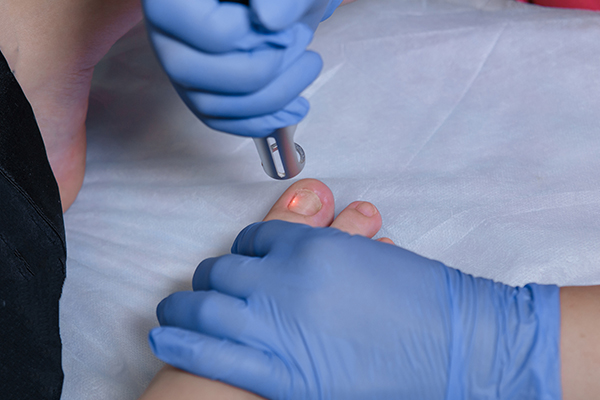
Diagnosing an ingrown toenail starts with a close physical exam, followed by a review of the patient’s medical history to rule out any preexisting conditions such as diabetes or other risk factors that may have predisposed you to this condition.
The doctor may order a few tests, including a foot X-ray to look at the extent of the ingrowth and to detect any foot deformity or signs of trauma that may have caused the ingrowth.
Risk Factors for an Ingrown Toenail
Ingrown toenails are common among both men and women, but the following risk factors can make you susceptible to this problem and its associated complications: (2)
- Foot deformities
- Diabetes
- Old age
- Hyperhidrosis leading to sweaty feet, especially common in teenagers
- Weight-bearing activities that exert undue pressure on the feet, such as standing for long periods during surgeries and ballet dancing
- Athletic activities, especially those involving active use of or repeated trauma to the feet, such as football
- Negligent or improper foot care, including not trimming the toenails regularly or rounding their borders instead of cutting them straight across
- Inherited tendency to develop recurrent toenail ingrowth, which is usually the case if you are born with an oversized toenail that grows beyond the edge of the toe
Complications of an Untreated Ingrown Toenail
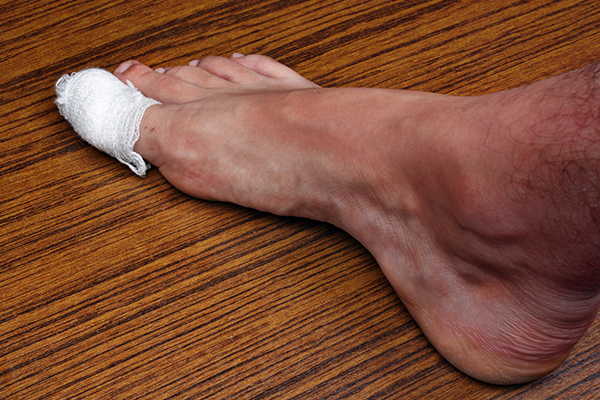
A lot of cases of ingrown toenails tend to resolve on their own with proper rest and care. However, when the problem persists or worsens, a consultation with a podiatrist is a must for the appropriate medical treatment.
If you don’t tend to your ingrown toenail properly, the surrounding tissue may get infected. This superficial infection can then spread to the underlying bone, especially if you have a preexisting medical condition that obstructs blood flow to your feet, such as diabetes.
This complication often results in tissue death, foot ulcers, open sores, and poor blood flow in the infected areas. So, it is very important to seek prompt treatment if you notice any sign of infection around your ingrown toenail.
When to See a Doctor
It is vital to look after your ingrown toenail in the early stages to prevent worsening. This mainly implies resting the affected foot to take the pressure off your toe and to avoid further injuries.
If you continue with your normal activities despite the increasing pain, the problem can become more serious and might even turn infectious.
The following signs and symptoms are an indication of developing complications, which warrant immediate medical attention:
- Increasing swelling that spreads to the ankle
- Bleeding
- Feeling hot and shivery
- Drainage of pus or fluid discharge speckled with blood
- Foul odor
- Overgrowth of skin around the affected toe
In some people, the problem may be recurrent and affect more than one toenail at the same time.
Home treatment cannot be relied upon in such cases because the ingrowth will simply come back after resolving. Thus, you will need surgery to get rid of such recurrent ingrowth once and for all.
Final Word
An ingrown toenail is a common occurrence that can result from a variety of underlying causes. It is typically characterized by pain, redness, and swelling, which can make movement difficult.
Straining your feet can aggravate the condition, so it is important that you limit your activity until the toenail heals. Early treatment is the best way to avoid further tissue damage, infection, and scarring.
If the condition does not subside with proper foot care and rest, consult your doctor about suitable treatment measures to fix the ingrowth and relieve the associated discomfort. Treatment may involve analgesics, antibiotics, and surgery.

- Was this article helpful?
- YES, THANKS!NOT REALLY


